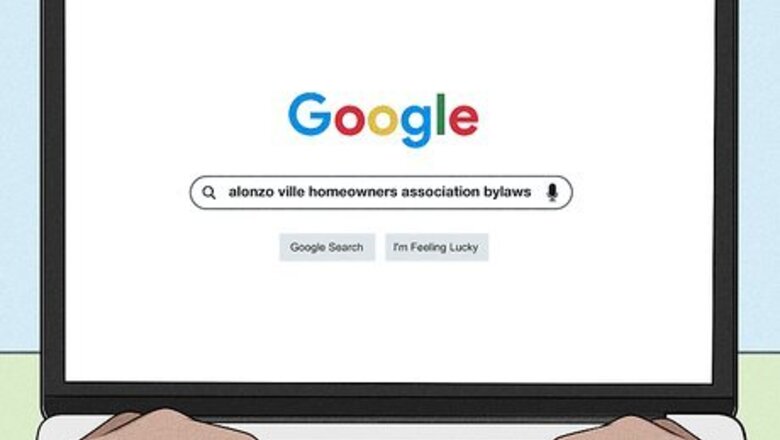
views
Making Your Basement Livable
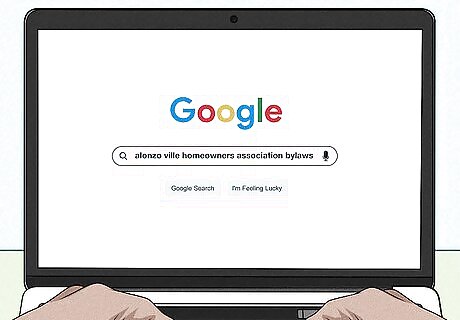
Find out whether it's legal to rent out a basement where you live. Before you get too eager to list your basement, do some research to see whether the laws in your area permit residential basements to be leased as legal dwellings. Even if they do, there may be certain conditions in place that you'll need to abide by, such as a maximum number of residents or individual dwellings per lot. You may be required to comply with numerous codes related to health and safety, as well as possibly obtaining zoning and rentals tax permission, depending upon circumstances. Don't forget to check your homeowner's association bylaws, as well. In many cases, they have the final say over what is and isn't allowed in the neighborhood. You should be able to pull up your neighborhood homeowner's association bylaws online through your State Secretary's website. If you're having trouble finding them, ask a neighbor to supply you with a printed copy. If you attempt to rent out your basement in an area where housing laws don't permit it, you may be putting yourself at risk of receiving a hefty fine.
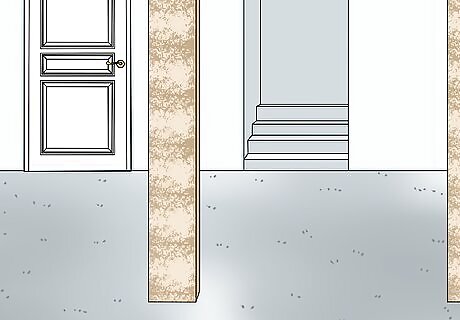
Determine whether your basement is big enough to live in. Not all basements are created equal—some are luxurious hideaways while others are little more than 4 walls and a concrete floor. Measure your basement from wall to wall to find its overall size. If it’s any smaller than about 300 square feet, it probably won’t make the most comfortable living space. In most places, residential basements must have ceilings that are at least 6.5–7 feet (2.0–2.1 m) in order to be considered legally inhabitable. A health or building inspector may require you to install and maintain proper exits and ventilation.

Make sure you can offer all the necessary amenities. In addition to a main living area, your basement will also need to be outfitted with a kitchenette and full bathroom, complete with a working toilet, shower, and sink. While not technically a necessity, most renters will also be looking for things like carpet, central heating and air, and cable hookups for TV and Internet access. Local regulations of rentals may also require installation (if not also inspection) of proper smoke alarms and carbon monoxide alarms. Renting a basement can be a good way to make a little extra money, but it can quickly become an expensive project if your space isn't up to code. In many cases, renovating an unfinished basement can cost $100,000 or more.

Take care of any necessary repairs. Inspect the basement thoroughly to look for anything that needs fixing or replacing. Drafty windows, loose stairs, and poor insulation are not uncommon, even in newer basements. These issues may be unattractive to prospective renters. If there are any problems with your basement that you’re unwilling or unable to fix at the moment, make a note of them and be sure to mention them in the listing description later on. Serious issues, such as water damage or faulty wiring, should be resolved before you go any further in the rental process.

Deep-clean the entire basement. Vacuum the carpet, dust all surrounding surfaces, and wipe down wooden fixtures with a coat of spray-on wood polish. Hit the windows with some glass cleaner and wipe them until they sparkle. Concrete floors should be swept or even mopped if it’s been a while since they’ve been cleaned. Use hydrogen peroxide, diluted chlorine bleach, or trisodium phosphate (TSP) to remove stains from concrete floors. While you’re cleaning up, be sure to also find a new place for any items that you don’t want your renter to see, such as stored boxes or personal belongings.
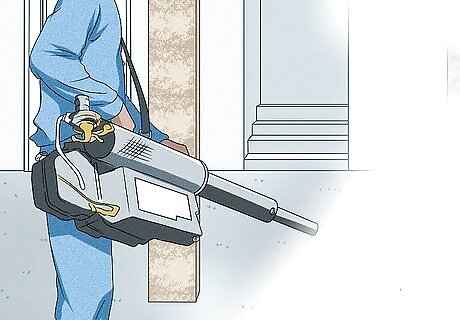
Have older basements fumigated if necessary. Basements can harbor lots of unseen critters. If you have reason to believe that your basement is already home to a family of rodents or insects, it may be a good idea to pay to have it treated with pesticides. Contact a fumigation specialist in your area to learn more about the process and get advice for how to proceed. Keep an eye out for dead bugs, droppings, or other unusual debris that might indicate a possible infestation. It can take anywhere from 5-6 hours to an entire week for toxic fumigation gases to dissipate, so make sure you schedule your pest control services long before you actually list your basement for rent. If your basement is on the smaller side, you may be able to fumigate it yourself using a commercial chemical fogger. You can find these devices at most hardware stores and home improvement centers.
Listing Your Basement Room
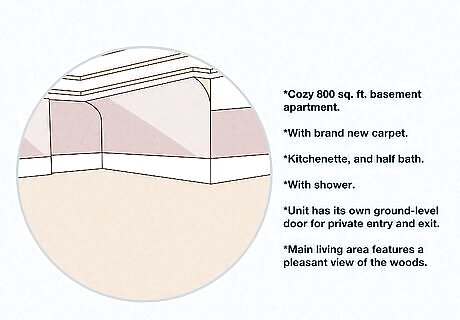
Provide a detailed description of your basement room. Include information like the square footage of the basement, the number of built-in rooms, and any included appliances or amenities. Potential renters will expect to see everything spelled out in plain writing. Being as descriptive as possible will also keep you from having to answer lots of questions once interested parties start contacting you. Your rental listing might say something like “Cozy 800 sq. ft. basement apartment with brand new carpet, kitchenette, and half bath w/ shower. Unit has its own ground-level door for private entry and exit. Main living area features a pleasant view of the woods.” Avoid overselling your space with exaggerated phrases like “Spacious, open layout” or “Luxurious wall-to-wall carpet” if these descriptions aren't accurate. If someone comes to view the room and doesn’t agree, they may decide to look elsewhere.

Take pictures of the space from multiple angles. Get a good wide-angle shot of the main living area, as well as each of the connected rooms and major appliances like heating and air conditioning units and plumbing fixtures. If your basement comes with any special features, such as a dehumidifier, gaming system, or baby grand piano, be sure to snap some close-ups of these, as well. Capturing clear, high-quality images will give renters a preview of exactly what they’ll be getting. It will also reflect well on you as the landlord, as it shows you have nothing to hide. If your basement room comes furnished, rearrange items as desired to “stage” your photos and give the space more visual appeal. There’s no single best number of pictures to put up along with your listing. Generally speaking, however, the more you post, the better.

Set a fair rental price based on similar listings. Browse listings for similarly-sized apartments online and see what the owner or realtor is asking. Use that figure to come up with a price that you think is fair given the amount of space and the level of luxury you have to offer. Depending on how large and well-appointed your basement is, this could be anywhere from $200-$1,200 per month. Basement apartments are typically priced lower than standalone lodgings, as they tend to be smaller and don’t offer as much in the way of privacy and independence. Make an effort to price your basement room competitively. It can be tempting to ask for more since it’s a part of your home, but try to keep the conditions of the local housing market in mind and be sensitive to the needs of your renter.
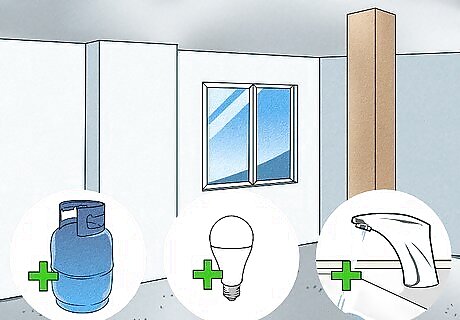
Decide whether you want to include the cost of utilities in the rent. Making your tenant partially responsible for paying for water, gas, and electricity can help subsidize your own living expenses. However, some renters may be put off by the additional cost. Ultimately, your decision may come down to the space you’re renting and how much it already has to offer. One compromise might be to charge a low, flat rate (say, $50-100) for utilities that will cover the better part of your tenant’s usage while also reducing the strain on your own wallet.

Put your contact info at the bottom of the listing. Decide on your preferred method of communication, then provide the phone number or email address where you can most easily be reached. You might even choose to display multiple forms of correspondence, as this will allow you to field and reply to the responses you get right away. Consider setting up a new email account specifically to handle your rental business if you don’t want to give out your personal address to strangers.
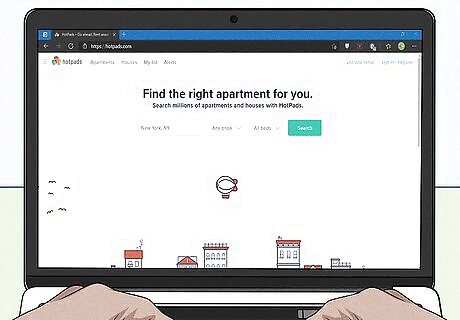
Advertise your basement room on popular housing websites. Once you’ve put the finishing touches on your rental listing, post it to a site like Zillow, HotPads, or Craigslist. Thousands of people use these resources every day to track down lodging leads, so you’re sure to get plenty of eyes on your listing. They’re also free, which means you won’t be forced to spend money to make money. Airbnb is another convenient option if you're more interested in short-term rentals. If you want your listing to reach as many eligible renters as possible, you could even take out ad space in the classifieds section of your local newspaper. Be aware that some well-known property rental sites, such as ForRent and Apartments.com, charge users a fee to post their listings.
Completing the Rental Process

Screen interested parties carefully. Once questions about your listing start coming in, reply promptly and use the follow-up call or email to learn a little bit about your prospective renter. Without prying, find out if they have a stable source of income, whether they're single or looking to live with a partner or roommate, and what kind of hours they keep. Your goal is to determine whether or not they’d be a desirable tenant. When it comes to finding a suitable lodger, you’re entitled to be as choosy as you want to be. After all, it’s your home, your property, and your rules.

Conduct a formal background check. Following your initial screening, dig a little deeper. Look up private investigation firms operating in your area and have them pull your renter's public records. Past evictions, criminal charges, and pending lawsuits should all be considered grounds for disqualification. Most investigation companies charge around $15-40 for a standard background check. It may also be a good idea to get in touch with the renter's employer directly to get a personal assessment of their character.

Run a credit check. Contact a credit reporting agency and request a report on your renter. Reading through their credit history will bring red flags like sizable debt or a history of missed payments to your attention. If everything is in order, you'll have a sense of security going forward. In order to request a credit report, you'll need to know the renter's full name, date of birth, social security number, and current address. Some forms may also ask for the names of their current employer and landlord. While a couple missed payments doesn't necessarily mean a person is untrustworthy, it's not recommended that you rent to anyone who has a history of serious financial problems like bankruptcy.

Collect a security deposit. Ask your renter for a one-time payment of a predetermined sum, which you'll hold onto as insurance for your property. Taking up a security deposit is a standard practice, and will prevent you from being left on the hook financially in the event that something is damaged or stolen. Read through the housing and real estate laws governing your state or territory to find out how much money you can legally demand for a deposit. Most of the time, it will be 1-2 months' rent. In some places, you may be able to ask for as much as you think is fair. In places that regulate security deposits, there may be detailed rules regarding your obligations for proper documentation and handling of any security deposit. You may accidentally forfeit your right to claim (or even hold) the deposit if you fail to follow the rules.

Draw up a monthly lease agreement. Outline the particulars of your arrangement in writing. Details like the date and amount of payment, the maximum number of occupants, and accident and damage liability should all be spelled out in clear, easily comprehensible language. If there are any other special terms you’ve worked out verbally with your tenant, don’t forget to include them as well. Search for templates online that you can modify to suit your exact needs and conditions. If you’d like a little help drafting a formal lease agreement, consult a real estate attorney for assistance.
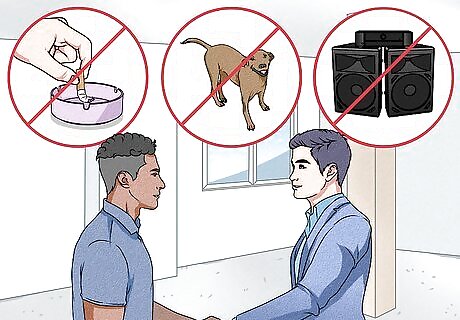
Lay down some house rules. When it comes time for your new renter to move in, take a moment to articulate what is and isn’t permissible on your property. They’ll need to know, for instance, if there are any other parts of the house that are strictly off-limits, or whether they’re allowed to have a pet. Make sure they understand your requests so they’ll know what’s expected of them as a tenant. Some other points you may want to go over with your renter include your policies on smoking, parking, illegal activity, noise, keeping doors locked, and having dates or other guests over. Ideally, you should make non-negotiable guidelines part of your formal lease agreement to ensure that they’re enforceable.


















Comments
0 comment